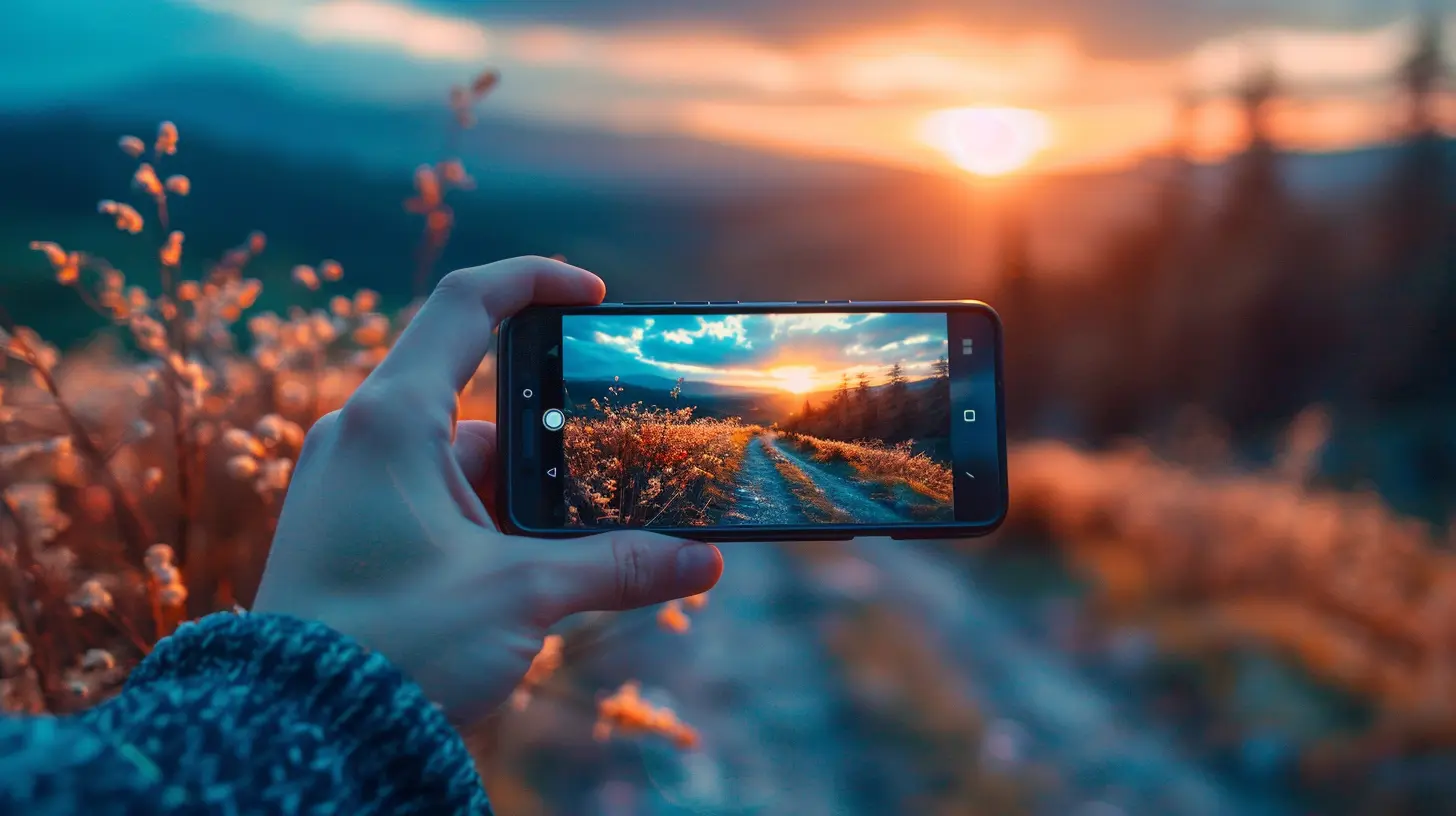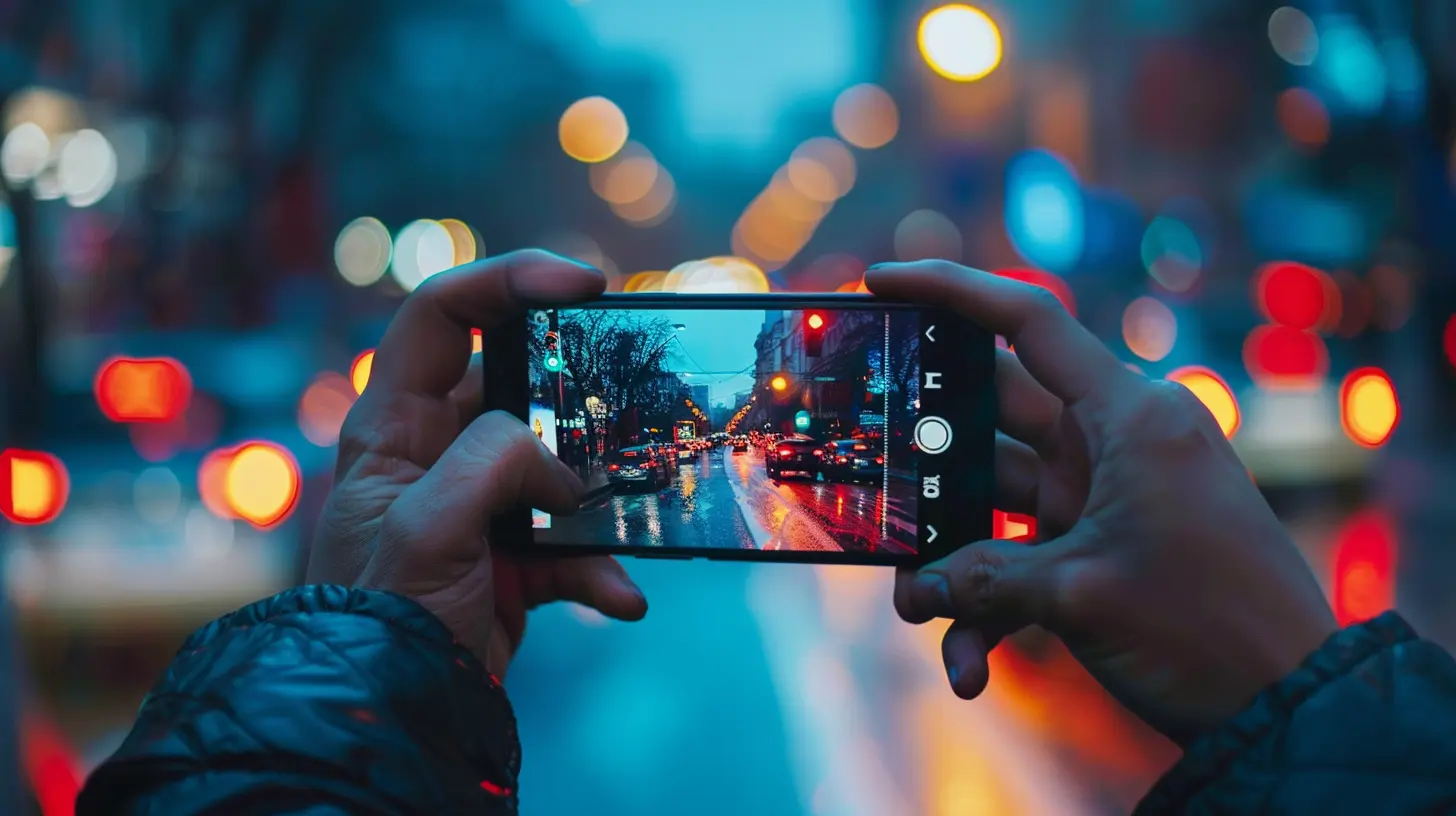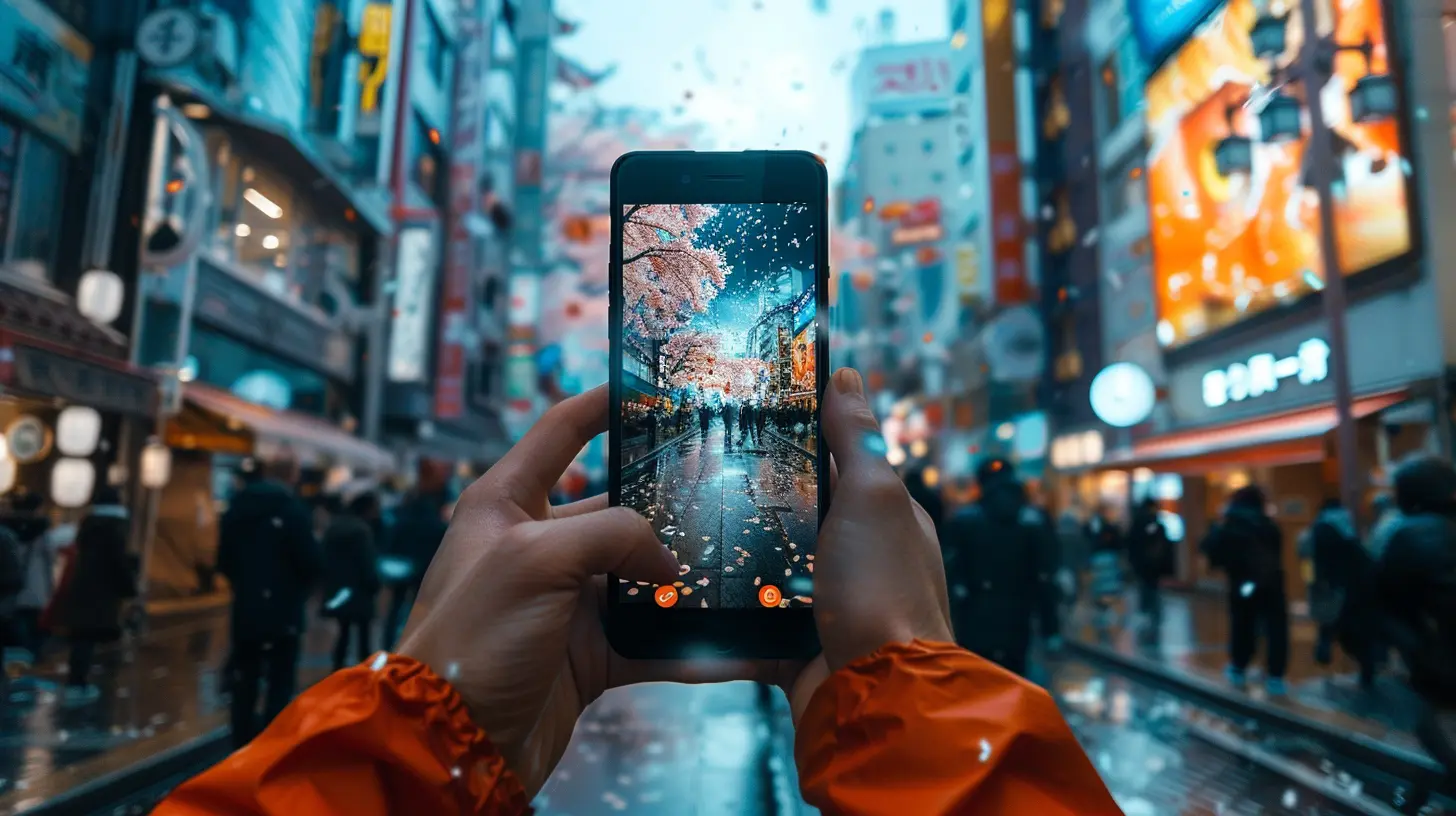How Mobile Technology is Enhancing Virtual Reality Experiences
7 August 2025
Welcome to the future—where the once lofty dream of stepping inside a computer-generated world is now a daily reality for many. But who’s the real game-changer behind this immersive revolution? You guessed it—your mobile phone. That little device in your pocket isn't just good for scrolling through social media or ordering late-night pizza anymore. It's rapidly becoming the powerhouse behind some of the most mind-blowing virtual reality (VR) experiences out there.
So, buckle up as we take a deep dive into how mobile technology is enhancing virtual reality experiences, making them more accessible, powerful, and magical than ever.
The Romance Between Mobile Tech and Virtual Reality
Let’s begin with a simple question—what exactly ties mobile technology to VR?Well, if VR is the dreamy canvas, then mobile tech is the paintbrush. It brings color, motion, and depth to that immersive landscape. From processing power to motion tracking, all the little things that make VR feel real are increasingly being driven by mobile innovations.
And the best part? You don’t need a spaceship-sized computer or a wallet-draining headset to step into a new world anymore. Mobile VR has cracked the code on convenience and affordability.
The Rise of Mobile VR: A Game Changer
Remember Google Cardboard? That humble viewer made out of—yes—literal cardboard, turned your phone into a VR machine. It may not have been cutting-edge, but it was a turning point. It showed that VR didn’t have to be expensive to be awesome.Fast forward to today—Samsung Gear VR, Oculus Go, and even standalone headsets like Meta Quest 2 rely on mobile-grade processors, sensors, and wireless technologies. What’s changed? Almost everything.
Processing Power On-the-Go
Modern smartphones are basically tiny supercomputers. With powerful CPUs (like Apple’s A17 Bionic or Snapdragon 8 Gen 2), they can crunch data at lightning speed. This is crucial for VR, which demands real-time rendering and responsiveness.These chips deliver the speed and multitasking grunt that VR needs—handling complex graphics, spatial audio, and head tracking without breaking a sweat.
Displays That Dazzle
Have you looked at your phone screen lately? It’s like staring into a crystal-clear pool. OLED and AMOLED technologies give you rich colors, true blacks, and razor-sharp resolution—which, when strapped onto your face in a VR headset, is like stepping into high-definition heaven.Higher refresh rates and better pixel density mean less motion blur and more seamless interaction. That’s the difference between feeling like you're in a game… and feeling like you're in the game.
Sensors: The Unsung Heroes Making VR Real
Without sensors, VR is just a pretty slideshow. But thanks to mobile technology, sensors are now smarter than ever.Accelerometers, gyroscopes, and magnetometers all work together to track your every move. Turn your head in real life—the VR world shifts naturally too. Thanks to mobile tech, it’s all smooth, accurate, and eerily lifelike.
Inside-Out Tracking — No Strings Attached
Remember the old days of VR with cables dragging you down like digital chains? Yeah, those were the Dark Ages.Today’s mobile-enhanced VR systems use inside-out tracking—cameras and sensors built directly into the headset, no need for external towers or sensors. Mobile vision computing enables this freedom, letting you roam, duck, dodge, and dance without worrying about tripping over wires.
5G: Fueling VR’s Need for Speed
Let’s be real: VR is hungry. It chews up data like there's no tomorrow—especially when you're streaming VR content or playing online multiplayer games.Enter 5G, the superhero of mobile connectivity. With blazing-fast download speeds and ultra-low latency, 5G makes it possible to stream high-quality VR experiences without any lag. It’s like upgrading your highway to a hyperloop—data flows so fast, you won’t even know it's moving.
This means:
- Instant content delivery
- Real-time multiplayer gaming
- Live VR events with no buffering
- Cloud-based VR without local processing
In short, 5G is turning mobile VR into a truly untethered experience.
Cloud Computing + Mobile VR = Next-Level Immersion
Let’s talk about the cloud. No, not the fluffy kind. We're talking cloud computing—offloading heavy data processing to remote servers.Mobile technology now works seamlessly with cloud-based platforms to deliver VR content that looks photorealistic but doesn’t require a nuclear-powered headset. Your smartphone or VR headset becomes a mere lens into a powerful virtual engine running elsewhere.
Think of it like this: you're holding the steering wheel (your mobile device), but the engine (cloud computing) is doing all the real grunt work.
This combo breaks down barriers:
- High-end VR without expensive gear
- Lightweight, comfortable headsets
- Content-rich worlds at your fingertips
AR + Mobile VR: The Blurring Realities
Now let’s spice things up. Augmented Reality (AR) and Virtual Reality (VR) are beginning to merge into a beautiful symphony known as Mixed Reality (MR).And guess who’s orchestrating it? Mobile technology, of course.
Phones equipped with LiDAR sensors, depth detection, and AR toolkits (like ARKit and ARCore) are enabling new experiences where VR worlds interact with real environments.
Imagine designing furniture in full 3D, walking through virtual blueprints on your actual construction site, or sharing virtual moments with holographic friends—all thanks to mobile magic.
Mobile Apps: The True Engines of VR Content
What’s a car without fuel? What’s VR without apps?App developers are harnessing the power of mobile platforms to build rich, interactive VR adventures—from games and stories to training programs and wellness experiences.
A few fun facts:
- Google Play and Apple’s App Store now host hundreds of VR-supported apps.
- Mobile VR apps are increasingly cross-platform, meaning you can play with friends on different devices.
And because mobile apps can update instantly, developers can tweak, enhance, and refine experiences on the fly.
VR for Everyone: Mobile is Making it Happen
Let’s not ignore one of the most important impacts mobile tech has on VR: accessibility.High-end desktop VR still costs an arm, a leg, and maybe your soul. But mobile-powered VR? It's affordable, compact, and—thanks to billions of smartphones already in people’s hands—just a download away.
Mobile VR is making immersive experiences available to:
- Students in remote areas
- Healthcare professionals in low-resource environments
- Gamers who can’t afford pricey setups
- Curious explorers who just want to dip their toes into VR
This democratization is nothing short of magical. It’s like giving everyone a passport to a world that never ends.
Real-Life Use Cases: More Than Just Fun and Games
We all love a good VR game, but mobile-enhanced VR is doing way more than entertaining us.Education
Imagine learning about the solar system by flying through it. Or studying ancient Rome while walking its streets. Mobile VR is transforming classrooms into adventure fields, making learning feel like playing.Healthcare
From virtual therapy sessions to surgical training and pain management, mobile VR is helping patients and doctors connect in new, meaningful ways.Real Estate
House hunting? Why drive around for hours when you can tour homes in VR—complete with floor plans, decor changes, and 360° views?Workforce Training
Mobile VR is being used in industries like aviation, construction, and hospitality to train employees in realistic, risk-free environments.The list goes on, and it’s growing every day.
Challenges Still Ahead (But Mobile is Ready to Tackle Them)
Of course, it’s not all rainbows and unicorns. Mobile VR still has hurdles:- Heat and battery life are constant struggles.
- Some devices suffer from limited field of view or motion sickness.
- Content quality can vary wildly.
But mobile tech continues to evolve. With advances in thermals, battery efficiency, AI optimization, and new graphics APIs—like Vulkan and Metal—the future looks bright.
The Road Ahead: What's Next for Mobile-Powered VR?
So, what can we expect from the marriage of mobile tech and VR in the years ahead?- Lightweight smart glasses that offer full VR/AR experiences
- AI-driven content that adapts to your mood and behavior
- Gesture controls using nothing but your hands
- Haptic feedback suits that make virtual touches feel real
- Full-body tracking without external sensors
It’s like sci-fi coming to life. And guess what? Mobile technology is steering the ship.
Final Thoughts: A New Reality, One Pocket at a Time
It’s wild to think that just a decade ago, VR was something out of a Hollywood blockbuster—and now it’s something you can jump into while lying on your couch.Thanks to mobile technology, we no longer need to choose between power and portability. We get both. And as smartphones become smarter, networks get faster, and developers get bolder, the lines between the real and the virtual will blur until they vanish altogether.
So the next time you glance at your phone, remember—it’s not just a device. It’s a portal. And the door to new realities has never been more wide open.
all images in this post were generated using AI tools
Category:
Mobile TechnologyAuthor:

Ugo Coleman
Discussion
rate this article
1 comments
Trixie Daniels
This article insightfully highlights the symbiotic relationship between mobile technology and virtual reality. As mobile devices become more powerful, they enhance accessibility and immersion in VR experiences. It's exciting to see how these advancements could democratize VR, making it more engaging and widely available to diverse audiences.
August 9, 2025 at 7:49 PM

Ugo Coleman
Thank you for your thoughtful comment! I completely agree—mobile technology is indeed a game-changer for VR accessibility and engagement. Exciting times ahead!


